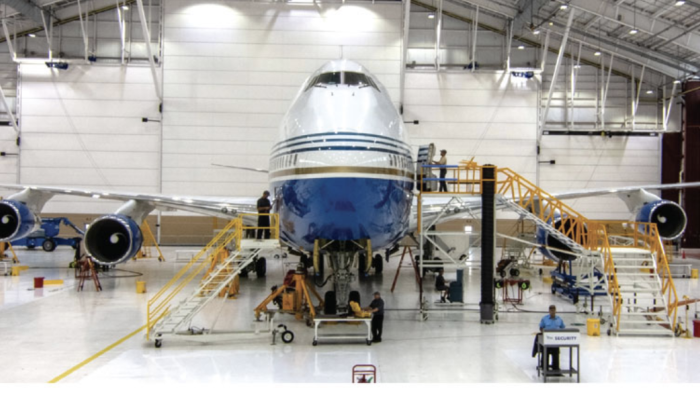“The most significant issue facing the maintenance community in 2010 is financial sustainability,” Aaron Hilkemann, president of Duncan Aviation, told AIN. “As demand decreased this past year, additional incentives were provided to operators. These incentives have reduced or eliminated already low profit margins for many maintenance providers. At the same time, increased regulatory burdens imposed by the FAA and EASA have increased administrative overhead costs for repair stations. Maintenance providers will need to increase their pricing to offset the increased regulatory burdens and generate financial capital for future growth.”
Hilkemann said many maintenance providers reduced staffing levels, salaries or work hours last year when maintenance demand decreased. While it was a necessary evil, it might come back to haunt the industry.
“Retention of quality technicians in the aviation industry and attracting new graduates into this industry will be important for aviation maintenance providers. Other industries will be trying to recruit new college graduates and hire the existing employees of maintenance providers. If the current trend of increased flight hours continues as it has the past few months, maintenance providers will need to increase their staffing levels throughout 2010 to meet demand,” he said. More…
Adding to the economic plight of the MRO industry is the fact that the delivery of new aircraft models in the past few years requires additional investments in tooling and training for maintenance providers, according to Hilkemann.
“The cost of tooling up is significant for each model type and requires additional capital investment by maintenance providers during a time when additional credit is still difficult for many to obtain,” he said.
Sarah MacLeod, executive director of the Aeronautical Repair Station Association, agreed with Hilkemann and expanded on the regulatory issues facing MROs.
“A heavy issue this year is legislation that will be harmful to maintenance organizations. With Congress now essentially running the aviation safety organization known to us as the Federal Aviation Administration, there will be more directives on safety and security. It is imperative that the aviation maintenance industry understand the trend for congressional micromanagement and become politically active. The future of every business, large and small, depends upon the industry’s connection to the political realities.”
The cost of regulatory compliance will continue to increase, she said. “The ability for civil aviation authorities to differentiate between compliance and enforcement is going to diminish as their workforce continues to shrink and the individuals become less knowledgeable about the MRO business. We are going to see increasingly strict enforcement and our companies will suffer from the impact.”
MacLeod also expanded on Hilkemann’s concern about the workforce. “There is a marked attrition of knowledgeable workforce members at both the mid-level management and in technical positions due to retirement and other reasons. Whether or not a company is going to grow or remain the same size will have a lot to do with available workforce. Even worse, the tribal knowledge within the workforce is shrinking. We are raising our children to be leaders and we are losing our blue-collar workforce.” She also expressed concern that the unions are not helping with apprenticeship programs. “Union members who are retiring and leaving the industry don’t appear to be interested in sharing their knowledge either.”
Brad Townsend, chairman of the NBAA Maintenance Committee, has been grappling with those issues for a long time.
“I’m most concerned about non-compliance,” he said. “The FAA Safety Team (Faast) did some research and found that aviation fatalities are more closely linked to technician mistakes than pilot mistakes. That’s a blight on our industry and we have created a think tank to address it and other problems.
“Our committee has partnered with the FAA’s Flight Standards Service-aircraft maintenance division and the Faast to discuss non-compliance issues, categorize them, address the problems and offer solutions through various venues such as NBAA’s maintenance management conference.
Townsend regards attracting new blood into the industry as a major goal and contends that a solution must include the means to foster retention of maintenance professionals.
“We’ve got solutions for those problems such as Project Bootstrap, which is an industrial certification process facilitating professional advancement, and [the Business Aviation Standard of Education], the education standard for business aviation as opposed to training. Maintenance professionals need more than technical training; they need a rounded professional education program,” he said.
Townsend also cited NBAA’s Tracs (technical rewards and career scholarship) program, which provides scholarships for new technicians, unemployed existing technicians and Part 147 instructors.
The limited number of new student starts in aviation maintenance still translates into many of the graduates going to the airlines when they’re hiring rather than to business aviation. “That’s the purpose of Tracs. We’ll give maintenance students a free scholarship to attend a business aviation maintenance course, and typically once they work on one of our aircraft they decide to stay in business aviation,” he said.







